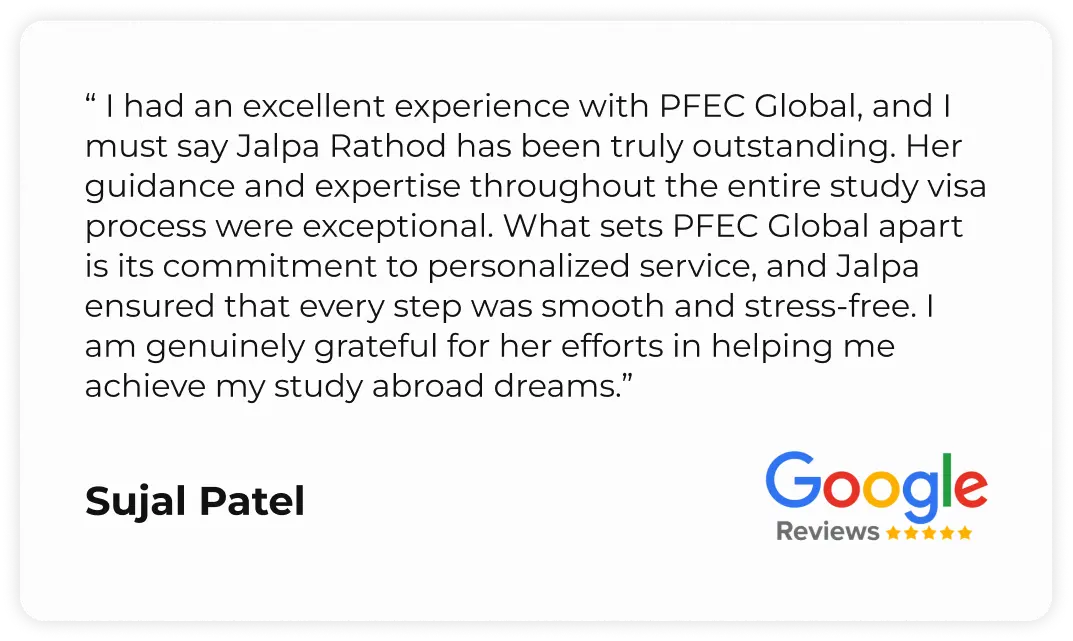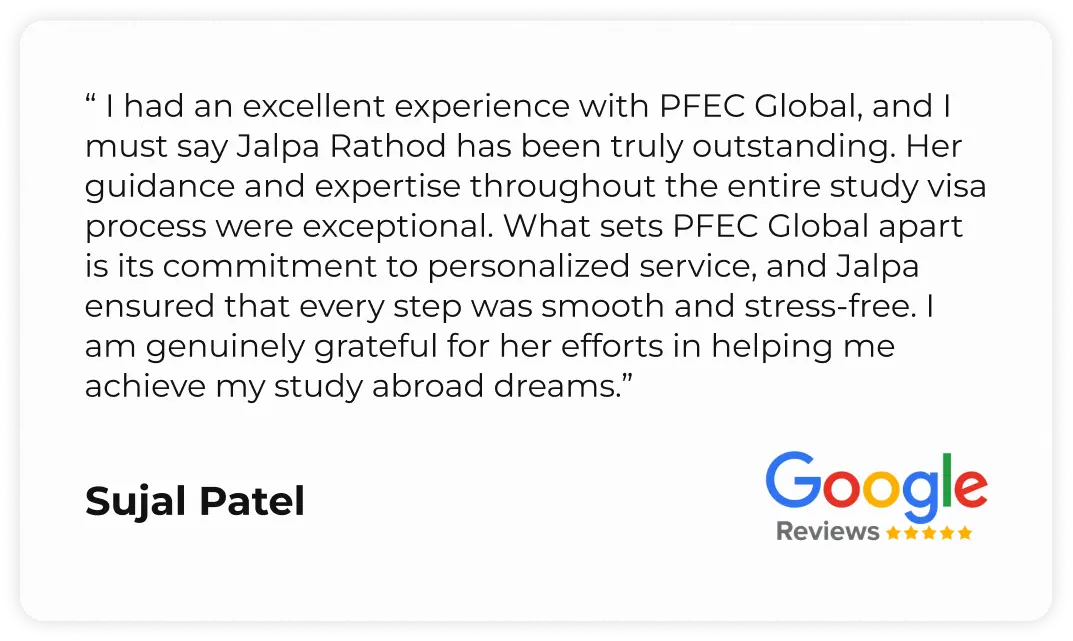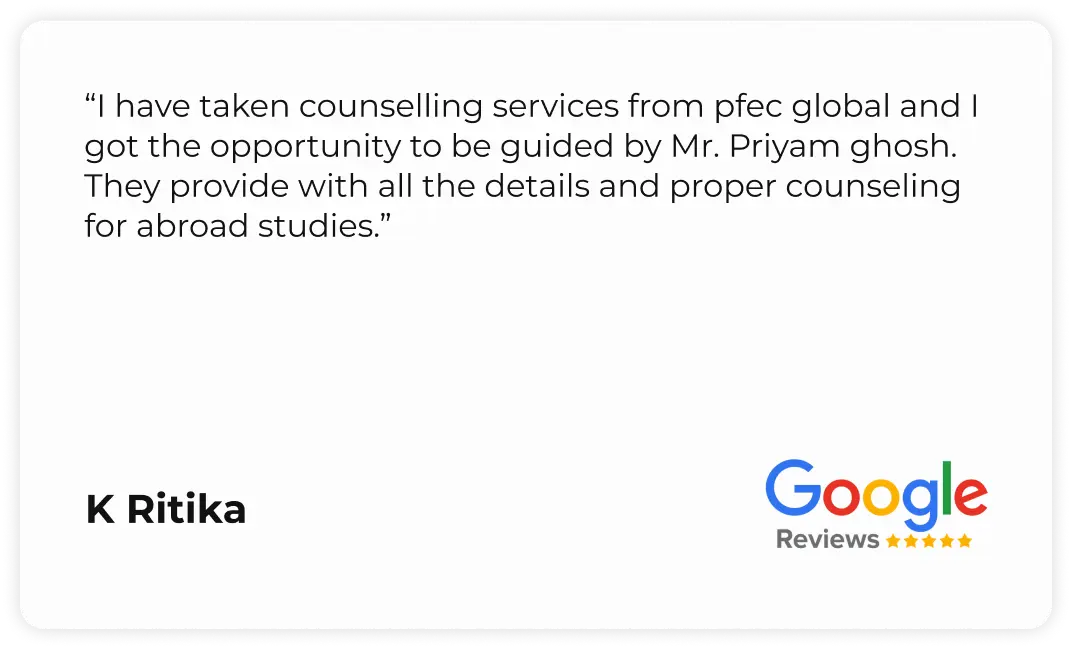Employer-Sponsored Visa Australia: Work and Live with Skilled Support
Discover various options that will help you take care of your health without breaking the bank.

Health insurance is an essential requirement for a worry-free experience while studying abroad.
International Medical Coverage: Health insurance provides you with the peace of mind to receive medical care anywhere in the world, ensuring you won't face overwhelming expenses.
Visa and Enrollment Support:Having health insurance can make obtaining a student visa and enrollment easier. This reduces the chances of your applications being delayed or rejected.
Financial Protection: In the event of an unexpected incident, having health insurance ensures that your medical expenses are covered. It safeguards you from potential financial stress.
Legal Compliance: Many countries create specific health insurance for international students. Securing this insurance not only safeguards your well-being but also shields you from potential legal complications and the risk of deportation. Protect yourself and ensure a smooth study experience abroad.
Comprehensive Care: Health insurance covers expenses related to hospital stays, prescription medications, mental health support, and much more.
Register with Us to Take the Next Step
Country-wise rules
The USA has a unique system that students must navigate to meet certain criteria. In contrast, Australia requires international students to have Overseas Student Health Cover (OSHC). Similarly, in the UK, students are obligated to pay an Immigration Health Surcharge (IHS) to gain access to the National Health Service (NHS). Additionally, some universities have their own specific requirements, which often include particular coverage limits in their health insurance schemes.
Selecting a plan
Recognizing the diverse needs of students, universities create customized health insurance policies that provide essential coverage. Students can conveniently enroll in these plans during their registration process, ensuring peace of mind from day one. If a university does not offer its own insurance, students must seek private health insurance, which may not fully meet their specific needs. It's crucial for universities to invest in comprehensive health insurance options that prioritize student well-being and security.
Purchasing Health Insurance
Health insurance is essential for students, and selecting the right plan is vital for their well-being. By carefully considering their unique needs, students can find a plan that offers the best balance of cost and benefits. After choosing a suitable plan and making the necessary payment, students will receive a certificate as proof of their coverage, ensuring assurance during their academic journey.
Country-wise rules
The USA has a unique system that students must navigate to meet certain criteria. In contrast, Australia requires international students to have Overseas Student Health Cover (OSHC). Similarly, in the UK, students are obligated to pay an Immigration Health Surcharge (IHS) to gain access to the National Health Service (NHS). Additionally, some universities have their own specific requirements, which often include particular coverage limits in their health insurance schemes.
Country-wise rules
The USA has a unique system that students must navigate to meet certain criteria. In contrast, Australia requires international students to have Overseas Student Health Cover (OSHC). Similarly, in the UK, students are obligated to pay an Immigration Health Surcharge (IHS) to gain access to the National Health Service (NHS). Additionally, some universities have their own specific requirements, which often include particular coverage limits in their health insurance schemes.
Employer-Sponsored Visa Australia: Work and Live with Skilled Support
Have you received interest from an Australian employer but feel unsure about your visa options? Many professionals face this challenge when exploring work opportunities in Australia. If you have the right skills and a job offer, an employer-sponsored visa could be your pathway forward.
This visa allows skilled workers to move to Australia legally and contribute to sectors facing labour shortages. It offers one of the most direct ways to gain Australian work rights and potentially achieve permanent residency.
In this guide, you’ll learn how employer sponsorship works, what visa types are available, who can apply, and how to take the next step confidently.
What Is an Employer-Sponsored Visa in Australia?
An employer-sponsored visa allows Australian businesses to sponsor qualified workers from overseas when local talent is not available. This arrangement benefits both sides. Employers fill essential roles. Skilled professionals gain the right to live and work in Australia.
This visa category includes temporary and permanent options, depending on your occupation, location, and level of experience.
To begin the process, the Australian employer must:
- Apply for approval as a Standard Business Sponsor
- Nominate a position listed on the government’s skilled occupation list
- Prove the role is genuine and offer a salary that meets local market rates
Once these steps are completed, the nominated overseas worker can submit their visa application. The specific visa subclass will depend on the job type, location, and visa
Key Benefits of Employer-Sponsored Visas
For Skilled Workers:
- Work in Australia on a temporary or permanent basis
- Stay for up to 4 years on eligible temporary streams
- Include your spouse and dependent children in the application
- Avoid points-based eligibility (not required for most subclasses)
- Access permanent residency pathways through visas like Subclass 186 or 494
For Employers:
- Recruit international talent for hard-to-fill roles
- Fill immediate skill gaps in priority sectors
- Sponsor professionals for long-term workforce stability
- Strengthen operations in regional areas through tailored visa options
Main Types of Employer-Sponsored Visas in Australia
Australia’s employer-sponsored visa program includes several subclasses, each with its own eligibility criteria, validity, and migration outcome.
| Visa Subclass | Stay Duration | PR Pathway | Applicable Regions |
|---|---|---|---|
| Subclass 186 (ENS) | Permanent | Yes | National |
| Subclass 482 (TSS) | Up to 4 years | Yes (Medium-term stream) | National |
| Subclass 494 | 5 years (provisional) | Yes (via Subclass 191) | Regional Australia |
| Subclass 407 | Up to 2 years | No | National |
| Subclass 457 | Closed | Yes (if eligible) | National |
1. Employer Nomination Scheme (Subclass 186) – Permanent Residency Option
The Subclass 186 visa grants permanent residency to skilled workers nominated by an Australian employer. It has three streams:
- Direct Entry: For overseas workers with qualifications and limited Australian work history
- Temporary Residence Transition: For those already working in Australia on Subclass 482 or 457
- Labour Agreement: For industries with a formal agreement with the Australian Government
This visa suits professionals seeking to build a long-term life in Australia.
2. Temporary Skill Shortage Visa (Subclass 482) – Flexible Work Options
This visa helps employers sponsor skilled foreign workers when Australian candidates are unavailable. Streams include:
- Short-Term: Valid for 2 years (not a PR pathway)
- Medium-Term: Up to 4 years, with access to Subclass 186 PR route
- Labour Agreement: For roles under sector-specific or regional arrangements
Note: The nominated occupation must be on the Skilled Occupation List, and English language standards apply.
3. Skilled Employer Sponsored Regional Visa (Subclass 494) – Regional Focus
The Subclass 494 visa allows employers in regional areas to sponsor skilled workers for up to 5 years.
- Must work in designated regional areas
- Requires nomination in a listed regional occupation
- Eligible for PR through Subclass 191 after three years of work and residence
Ideal for skilled professionals open to relocation outside Australia’s largest cities.
4. Training Visa (Subclass 407) – Develop Skills in Australia
The 407 visa is designed for short-term occupational training and professional development.
- Supports structured workplace training or internships
- Great for recent graduates or developing professionals
- Does not offer a pathway to permanent residency
Best suited for building experience in an Australian work environment.
5. [CLOSED] Temporary Work (Skilled) Visa (Subclass 457)
The Subclass 457 visa has been discontinued for new applications.
However:
- Existing 457 holders may qualify for permanent residency via transitional arrangements
- Grandfathering provisions apply for workers sponsored before 18 March 2017
If you currently hold a 457 visa, seek tailored advice to explore your PR options.
Who Can Apply: Employee and Employer Eligibility Explained
To apply for an employer-sponsored visa in Australia, both the employer and the employee must meet specific eligibility requirements. Any mismatch can delay or jeopardize the visa process.
For Skilled Workers (Employees)
To qualify, you must:
- Have an occupation listed on an eligible skills list
- Hold the relevant qualifications or equivalent work experience
- Meet English language proficiency (typically IELTS 6.0 in each band or equivalent)
- Pass health and character checks
- Meet licensing or registration standards, if your occupation requires it
These conditions apply to all major visa subclasses, including Subclass 482, 186, and 494. If you’re exploring a long-term skilled worker visa for Australia, this pathway is one of the most direct.
For Employers (Sponsors)
Employers who wish to sponsor overseas workers must:
- Be a registered Australian business operating legally
- Hold or apply for a Standard Business Sponsorship (SBS)
- Demonstrate a genuine need for the nominated role
- Offer a market salary rate that aligns with Australian standards
- Meet workplace law obligations regarding fair employment practices
Additional conditions may include:
- Labour market testing to show no suitable local candidates
- Meeting training benchmarks, particularly for Subclass 186
Failure to meet sponsorship or nomination conditions can result in delays or application rejection.
Understanding the Occupation Lists and Legislative Instruments
Every employer-sponsored visa application is tied to a job listed on one of Australia’s official occupation lists. These lists are defined by immigration legislation and updated regularly.
Key Occupation Lists
| List | Applies To |
|---|---|
| Short-Term Skilled Occupation List (STSOL) | Subclass 482 (Short-Term stream). Not a pathway to permanent residency. |
| Medium and Long-Term Strategic Skills List (MLTSSL) | Subclass 482 (Medium-Term), Subclass 186 (Direct Entry). PR pathway available. |
| Regional Occupation List (ROL) | Subclass 494 (Regional employer-sponsored visa). |
Note: The older Consolidated Sponsored Occupation List (CSOL) is now integrated into these updated lists.
Other Critical Requirements
Market Salary Rate
Employers must pay the same or higher salary than what an Australian worker would earn in the same role. This ensures fair competition and prevents wage undercutting.
Legislative Instruments
Official immigration instruments outline visa-specific rules, including:
- English language exemptions (based on occupation or salary level)
- Training benchmarks that sponsoring businesses must meet
- Occupation-specific conditions tied to visa subclass and stream
Expert Tip
Before applying, confirm that your occupation is still eligible under the latest immigration policy. These lists and instruments change frequently. A registered migration agent can help ensure you meet all current requirements.
Employer Sponsorship Process: Step-by-Step Overview
Applying for an employer-sponsored work visa in Australia involves three main steps. Both the sponsoring business and the skilled worker have responsibilities throughout the process.
1. Sponsorship
The employer must first apply to become a Standard Business Sponsor.
- Must be lawfully operating in Australia
- Show financial health and compliance with Australian workplace laws
- Once approved, sponsorship is valid for up to 5 years
2. Nomination
The employer then nominates the job role to be filled by a skilled overseas worker.
- The role must be listed on a relevant Skilled Occupation List
- Must prove the position is genuine and paid at market salary rates
- Include labour market testing results if required
3. Visa Application
The skilled worker lodges the actual visa application after nomination.
- Submit identity documents, qualifications, English test scores, and health checks
- You can lodge the sponsorship, nomination, and visa application at the same time
Expert Tip: Lodging all steps together can reduce processing times. Ensure all documents are accurate and complete to avoid delays.
Obligations After Visa Grant: What Both Parties Should Know
Getting the visa is just the beginning. Both visa holders and employers have ongoing legal obligations to stay compliant and avoid visa cancellation.
For Visa Holders
- Work only in the nominated occupation and for the sponsoring employer
- Remain in the role for the required period (typically 2 to 4 years for temporary visas)
- Notify the Department of any changes in job, employer, or location
- Follow all visa conditions, including travel or regional work restrictions for certain visas like Subclass 494
For Employers
- Pay the agreed market salary and maintain compliant working conditions
- Ensure the position remains aligned with the original visa nomination
- Inform the Department of changes in employment, business structure, or sponsorship status
- Maintain proper records and fulfil all reporting duties under the sponsorship agreement
Important: Breaches in obligations can result in visa cancellation for the employee or loss of sponsorship rights for the employer. Regular compliance checks and legal updates are essential to stay on track.
How PFEC Global Supports Employer-Sponsored Visa Applications
Employer-sponsored visa applications require careful coordination between skilled workers and sponsoring businesses. With changing regulations and subclass-specific rules, expert support makes a difference. PFEC Global partners with both applicants and employers to manage the process end-to-end.
For Skilled Workers
We support you throughout your visa journey:
- Match you with eligible employers based on your skills and occupation
- Help prepare key documents: resume, English test results, skills assessments
- Guide you through timelines, visa options, and nomination requirements
- Provide clear advice on eligibility and next steps for permanent residency
For Employers
Our team helps streamline sponsorship and compliance:
- Register your business as a Standard Business Sponsor
- Prepare accurate job nominations aligned with occupation lists and market salary rules
- Advise on labour market testing, salary benchmarks, and role eligibility
- Ensure your applications stay compliant with the latest legislative changes
PFEC Global offers reliable, ongoing support—from consultation to visa grant. Our team reduces risk and ensures both employer and applicant are fully prepared.
Conclusion
The employer-sponsored visa pathway is one of the most efficient ways for international professionals to live and work in Australia. It also allows businesses to hire the talent they need
Whether you’re a skilled applicant seeking career growth or an employer filling a vital position, this visa stream supports long-term success, workforce development, and migration stability.
Ready to move forward? Speak with our migration experts to check your eligibility and create a tailored visa plan that works.



What is an employer-sponsored visa and how does it work in Australia?
It allows Australian businesses to sponsor skilled workers from overseas. The process involves:
- The employer becoming an approved sponsor
- Nominating a role that matches government criteria
- The skilled worker submitting a visa application
Some visa streams, such as Subclass 186, also offer permanent residency.
Do I need a skills assessment for an employer-sponsored visa?
In many cases, yes.
A skills assessment is required for:
- Occupations on the Medium-Term list
- Trade or licensed roles
- Applicants from countries without automatic skills recognition
It is common for Subclass 482 and Subclass 494 applications.
Can my family come with me on an employer-sponsored visa?
Yes.
You can include:
- Your spouse or de facto partner
- Dependent children
Family members can usually live, study, and in many cases, work in Australia on dependent visas.
What happens if I lose my job while on a sponsored visa?
You have 60 days to:
- Find a new sponsor
- Transfer your visa to a new employer
- Apply for another visa stream or a bridging visa
PFEC Global can help you assess your options and take the right steps quickly.